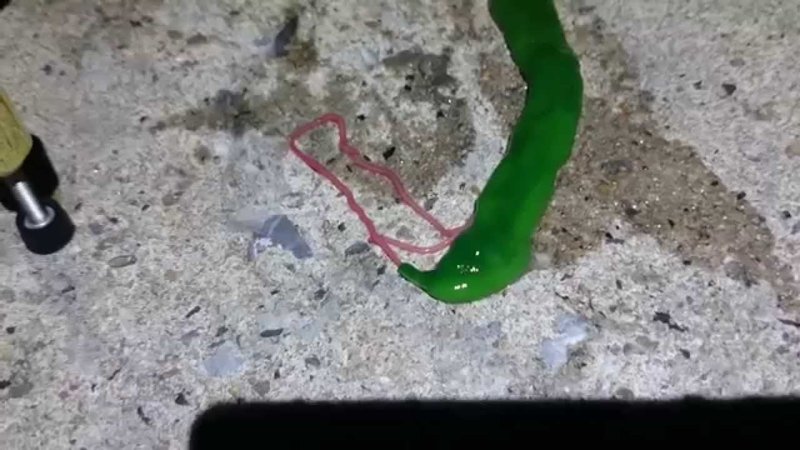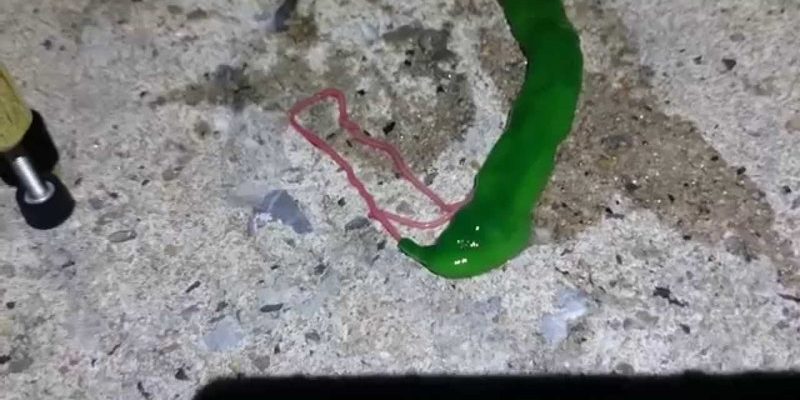
In the vast underwater landscape, ribbon worms, or *Nemertea*, can be found lurking among rocks and seaweed, waiting patiently for the right moment to strike. They may look like colorful, squiggly ribbons, but don’t let their appearance fool you. These creatures have a fascinating feeding mechanism that relies heavily on their slimy secretions. So, if you’ve ever wondered how these remarkable animals turn their sticky substance into a successful hunting tactic, you’re in for a treat.
What Are Ribbon Worms?
Ribbon worms belong to a group of invertebrates known as *Nemerteans*. They can range in size from just a few centimeters to over 30 meters long—yes, you read that right! It’s a bit like finding a worm that could stretch out to about the length of a bus! These creatures have soft bodies and are usually colorful, flaunting hues of pink, brown, and green.
One of the most interesting things about ribbon worms is their ability to extend their bodies, allowing them to reach out for prey. Think of it like a magician pulling a long scarf from their sleeve, but instead, this scarf is a rubbery, flexible body. When they spot a meal nearby, they can quickly shoot their bodies forward to grab their target. This ability gives them a unique advantage in their hunt.
Furthermore, ribbon worms are found in various habitats, from shallow shores to deep seas, demonstrating their adaptability. Their habitat choice is often influenced by the availability of prey, which primarily includes small fish, crustaceans, and even other worms.
The Science Behind the Slimy Capture
So, how do ribbon worms actually catch their prey using slime? It all comes down to a special secretion they produce that’s sticky and, in some cases, toxic. This slime isn’t just for show; it’s a highly effective tool for trapping unsuspecting animals. Picture this: you’re at a party, and someone spills a drink. The spill creates a sticky mess that everyone avoids, right? That’s similar to how ribbon worms operate when they unleash their slime.
When a ribbon worm spots its prey, it can release a long, slimy thread that extends outwards. This thread acts like a fishing line, capable of grabbing hold of small fish or crustaceans that swim too close to the worm’s hiding spot. Once the prey is ensnared, the worm can reel it in, much like pulling a caught fish out of the water. This method is not only efficient but also provides an element of surprise for the prey.
Interestingly, some ribbon worms produce a type of slime that contains toxins, which can immobilize or even kill their prey before consumption. This adds an extra layer of effectiveness to their hunting strategy, as it allows them to catch and subdue their meals quickly, without putting in too much effort.
The Role of Color and Camouflage
Ribbon worms are often brightly colored, which might seem counterintuitive for animals that rely on stealth to catch their food. However, their vibrant colors can play an important role in their survival. Often, these colors are a warning to potential predators, signaling that they might be toxic or unpalatable. This is similar to how some brightly colored frogs warn predators to stay away.
Moreover, while their colors can act as a deterrent, ribbon worms also utilize their environment to blend in. They can often be found nestled among rocks, seaweed, or sandy sea beds, adapting their position to become less visible to both prey and predators. You might think of it as a game of hide-and-seek, where the ribbon worm needs to minimize its visibility while waiting for the perfect moment to strike.
This combination of bright colors and effective camouflage makes ribbon worms both fascinating and effective hunters in their underwater realms.
Ecological Impact of Ribbon Worms
You might be wondering how ribbon worms fit into the larger picture of marine ecosystems. These creatures play a vital role in their habitats, acting as both predators and prey. By controlling the populations of small fish and crustaceans, ribbon worms help maintain a balanced food web.
In turn, ribbon worms are also food for larger animals, such as fish and birds. This creates an essential connection between different species in the ocean ecosystem. If you think of the ocean as a giant community, ribbon worms are like the gardeners, helping to keep everything in check and healthy.
However, like many marine species, ribbon worms face threats from habitat destruction and pollution. As we encroach on their habitats, it’s crucial to understand their role and promote conservation efforts.
Why Ribbon Worms Matter
Now that you know about how ribbon worms catch their prey, you might be wondering why it’s essential to learn about these creatures. Understanding the unique adaptations and hunting strategies of ribbon worms can shed light on the complexity of marine life. Each creature plays a part in the intricate web of life beneath the waves, and losing any part of that web can have far-reaching consequences.
Moreover, studying organisms like ribbon worms can provide insights into biological processes that might lead to new discoveries in medicine or technology. Nature has a way of inspiring innovation, and the ways ribbon worms capture prey could potentially lead researchers to new materials or methods we haven’t even thought of yet.
In conclusion, ribbon worms and their sticky slime are more than just an ocean curiosity; they are vital players in the ecosystems they inhabit. So next time you think about the strange and wonderful creatures living in our seas, remember the ribbon worm and its clever, slime-filled hunting strategy.
Whether you’re a marine enthusiast or just someone curious about ocean life, there’s always something new to learn from these unique animals. Their story is a reminder of the incredible diversity and complexity of life beneath the surface. Let’s keep exploring!

